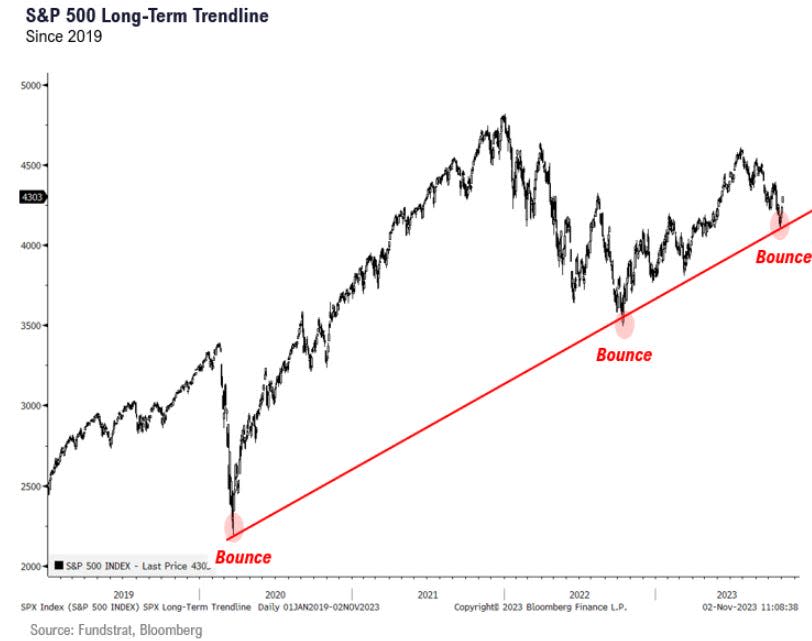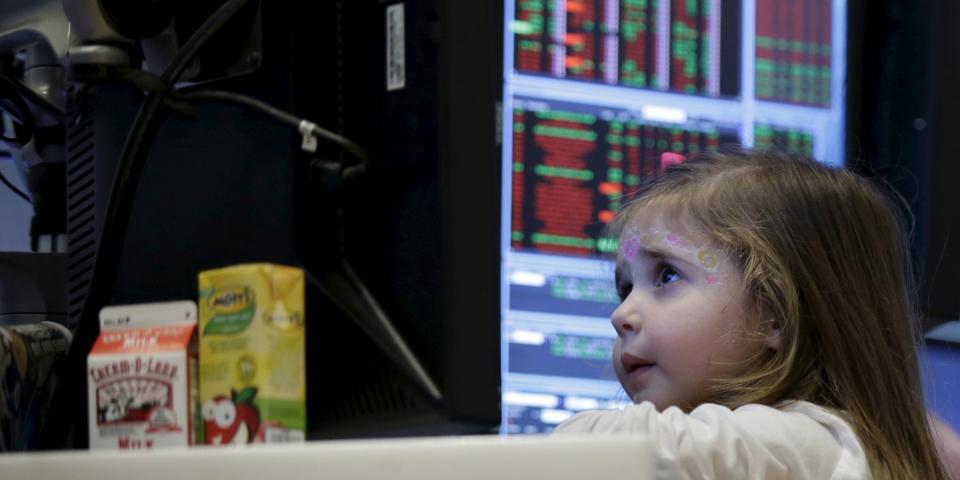A “baby rally” has unfolded in the stock market that could be the start of a broader year-end rally.
That’s according to Fundstrat’s Tom Lee, who highlighted fundamental and technical reasons for a rally.
“There are a few structural reasons to expect stocks to have some positive traction in coming weeks,” Lee said.
A “baby rally” has taken hold of the stock market in recent days, and it could represent the start of a larger year-end surge in stock prices.
That’s according to a Friday note from Fundstrat’s Tom Lee, who highlighted several fundamental and technical factors that should support stock prices over the next few weeks.
“Incoming macro developments have been favorable in a way that, in our view, sets the stage for stocks to gain in the near-term,” Lee said. “So far, it is a ‘baby rally’ but this could turn into a larger rally.”
For one, Lee said that a soft October jobs report “would be unequivocally positive” for stock prices. That’s exactly what happened, with 150,000 jobs added to the economy last month, below consensus estimates for a gain of 180,000 jobs.
That softness in the jobs report gives the Federal Reserve more breathing room in its trajectory path of interest rates. The 10-year US Treasury yield fell 15 basis points to 4.50% on Friday after hitting a multi-year high of more than 5% last week.
Meanwhile, corporate earnings results for the third-quarter have remained overwhelmingly positive. So far, 80% of S&P 500 companies have reported earnings, and 82% of those companies beat earnings by a median of 7%, according to data from Fundstrat.
Other positive fundamentals developing in markets, according to Lee, includes the stock market fear gauge (the VIX) plunging from the 20 level to just above 15, the end of tax loss harvesting trades for mutual funds in October, and a meaningful move lower in long-term interest rates.
From a technical perspective, Lee said “there are a few structural reasons to have some positive traction in coming weeks.”
Those reasons include the percentage of stocks trading above their 200-day moving average falling to just 23%, which is a bottom decile reading since 1994. When stocks have gotten this oversold, the median six-month forward gain is 9.7% with a 80% win-ratio, according to Lee.
Meanwhile, the Nasdaq 100 saw 15 consecutive days when the 5-day return was negative. This has happened only 14 times since 1985, and excluding the dot-com bubble, the median 12-month forward gain was 19% with a 91% win-ratio.
“These are meaningful quantitative/structural arguments for why a durable bottom was formed in late October. And if so, this is a case for this ‘baby rally’ to strengthen,” Lee said.

Read the original article on Business Insider
Credit: Source link




